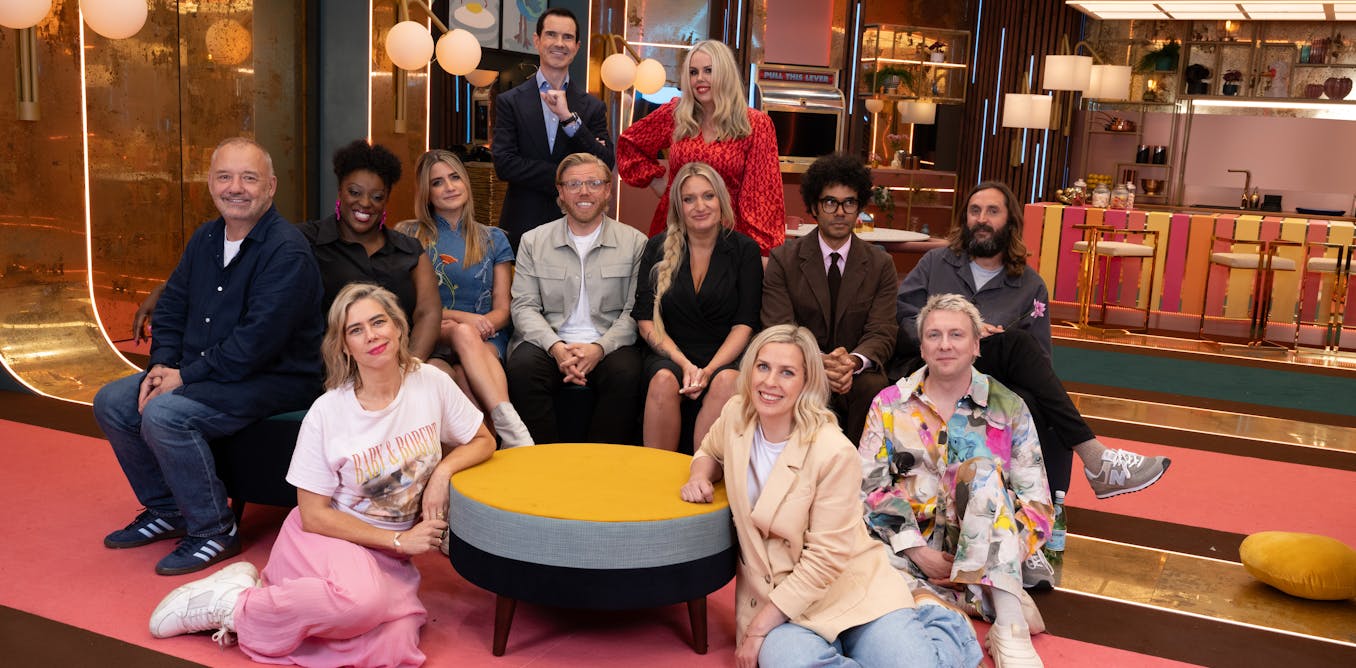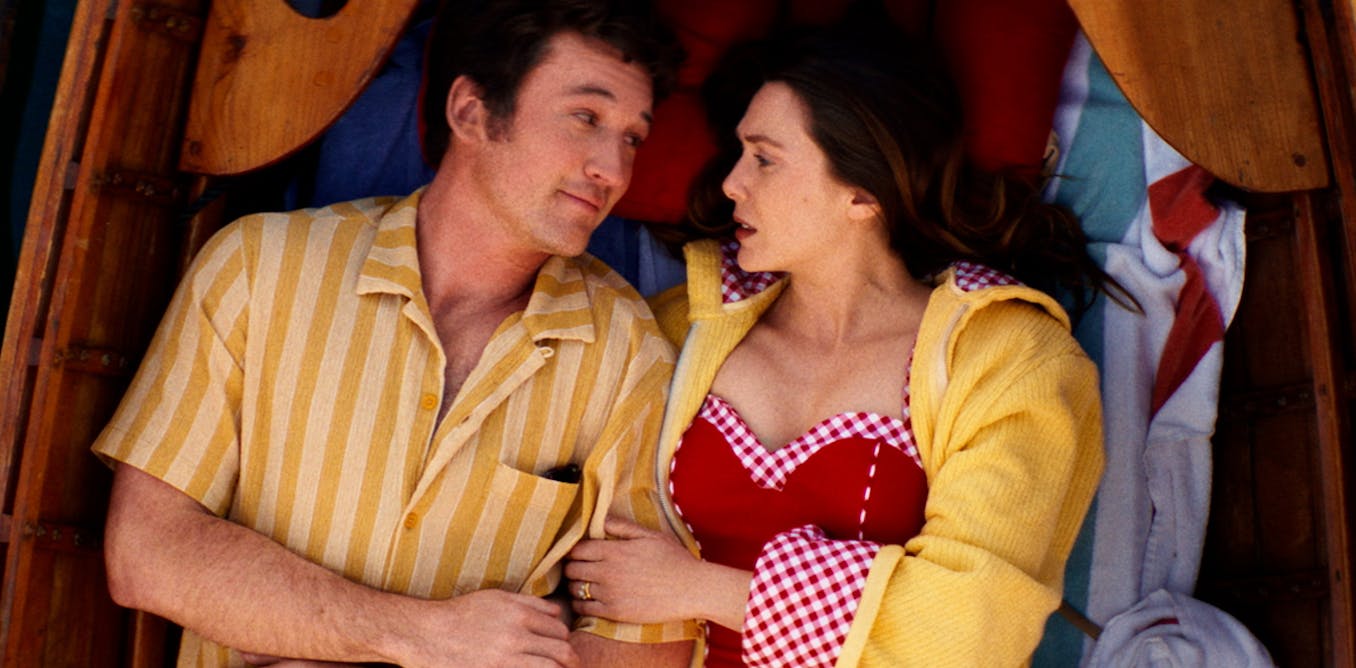Last One Laughing is a battle royale for stand-ups. Ten comedians, one room, surrounded by cameras. Laugh once and they’re warned. Laugh again, and they’re out. Last comic left wins.
It is an international TV phenomenon, in 29 countries from Australia to Iran.
The latest season is from the United Kingdom, hosted by Jimmy Carr and featuring comedians like Bob Mortimer, Sara Pascoe and Joe Lycett.
But why do we, whatever our linguistic or cultural background, love watching comedians trying desperately hard not to laugh at each other?
It works because it’s funny – but it’s not about comedy. It’s about laughter. Philosophers and psychologists have spent hundreds of years thinking about what makes us laugh.
Here’s what they’ve had to say about laughter – and what they, perhaps, would have to say about Last One Laughing.
What makes us laugh?
Comedy takes time, but laughter can take less than a moment. Last One Laughing shows us the three major theories of humour that try to explain moments of spontaneous laughter.
The oldest is “superiority theory”. English philosopher Thomas Hobbes explained in is 1651 book Leviathan we “maketh those Grimaces called LAUGHTER” when we realise we’re better off than someone else. We “suddenly applaud” ourselves when we recognise our superiority.
In the new Last One Laughing series, Richard Ayoade nearly catches out two players when, asked what his childhood hobbies were, he replies: “I don’t know. I cried a lot?”
Irish philosopher Francis Hutcheson disagreed with Hobbes and suggested an alternative: “incongruity theory”.
In Reflections Upon Laughter (1750) he maintains we laugh in surprise at “bringing resemblances from subjects of a quite different kind from the subject to which they are compared”.
This happens when we meet one word with two meanings, like in every Christmas cracker joke, or Rob Beckett asking “What did one plate say to the other plate?” and answering “Dinner’s on me”.
In Jokes and Their Relation to the Unconscious (1905), Austrian founder of psychoanalysis Sigmund Freud suggests our subconscious works to stop us from consciously understanding something that might be socially unacceptable. If we allow ourselves to acknowledge what we think we’re seeing, the energy we had been using to repress ourselves is then “discharged by laughter”.
Last One Laughing has many, mostly unprintable, moments that illustrate Freud’s relief theory of humour. No-one is at ease when Bob Mortimer’s magic act features a napkin rising into the air at groin height.
The art of not laughing
In Anatomy of the Gag (1963), the Czech playwright – and politician – Václav Havel suggests a gag has two phases. We see something and think we know what it is. Then, we see the same thing again – but we recognise it as something different. But the two interpretations can’t both be true! So we know we’ve made a mistake.
We laugh because of a “surprising quality” that “stems not from the revelation of the unknown, but from the unexpected look at the known”. We laugh because now we know we’re properly seeing the world as it is.
Comedians laugh at their own jokes because they experience this fresh look at the world before they’ve put it into words. This explains why Mortimer laughs at his own teeth, and Lou Sanders is laughing before she reaches her own punchline. Or, indeed, her own set-up.
But Last One Laughing doubles our laughs. We watch the actual joke, we get it, we laugh. And then we see comedians desperately trying not to laugh – but we know that they get the joke too! And so we get an unexpected second look at the joke.
Comedians not laughing when it’s expected is, in itself, a second gag. Our doubled laugh lets us express our understanding of this rather odd thing that’s happening. We’re reassuring ourselves, and anyone with us, that we know what’s going on.
Understanding the world
Douglas Robinson’s work in linguistics and Antonio Damasio’s work in neuropsychology suggests our brain and our body learn to respond to the world before our mind has kicked in. We’re physically laughing before we’ve mentally processed what’s funny. We see this response in babies, and it stays with us throughout our lives.
The feedback that tells us that we’ve understood the world correctly comes from other human beings. So it’s unsurprising we are 30 times more likely to laugh in company. It’s unsurprising that laughter is infectious. And it should be unsurprising that the winning moment of Last One Laughing comes from a game we play with newborns: “peek-a-boo”.
Last One Laughing helps us understand why we laugh at our own jokes, why we can’t always explain what’s funny, and why gags don’t need words. We’re watching professional comedians get the joke (as we do!) without laughing (as we expect?) but we know that it’s all OK. And, however briefly, we glimpse the world anew.

The post “We’re hardwired to laugh – this is why watching comedians try to be the ‘Last One Laughing’ is so funny” by Fergus Edwards, Lecturer in English, University of Tasmania was published on 04/08/2025 by theconversation.com





































Leave a Reply